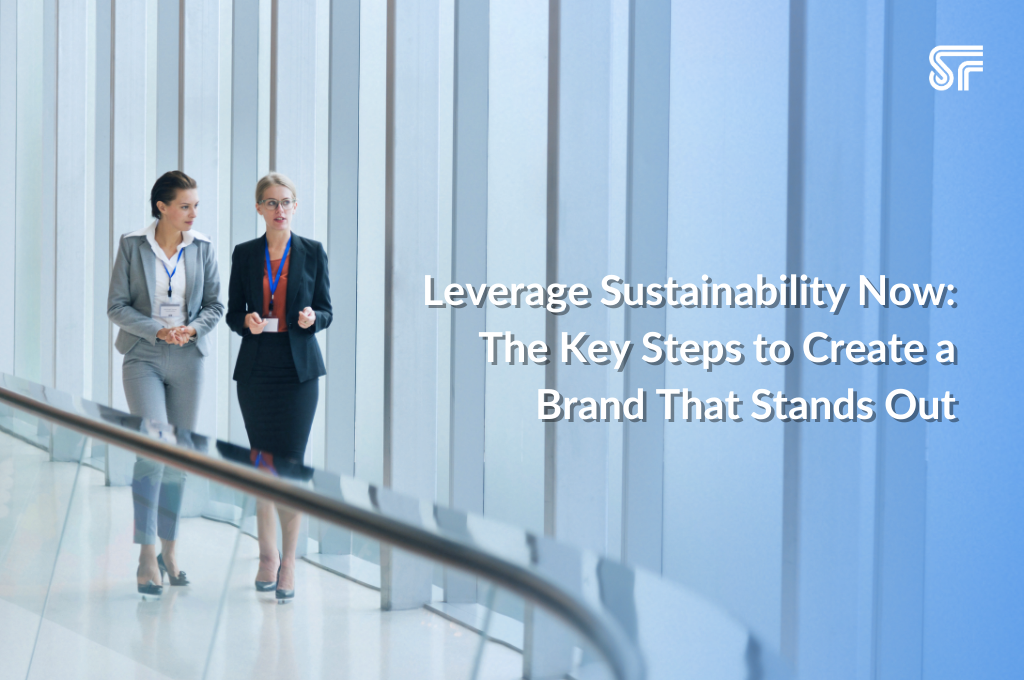Leverage Sustainability Now: The Key Steps to Create a Brand That Stands Out
Understanding the Impact of Sustainable Branding on Consumer Perception
In the modern marketplace, sustainable branding has become essential to winning over consumers who value environmental responsibility and ethical practices. More people than ever are concerned about how brands impact the world, with many preferring companies that share their values. By adopting eco-friendly and sustainable practices, brands can attract consumers who prioritize ethics in their purchases, enhancing customer loyalty and brand trust. This connection between a brand’s identity and its environmental commitment can be pivotal, as customers are more likely to support brands they feel reflect their own beliefs. Sustainable branding is not just a trend; it’s a shift in consumer expectations that businesses can no longer ignore.
Additionally, the reputation benefits of a sustainable brand extend far beyond customer retention. Brands committed to sustainability often find their reputations boosted as socially responsible leaders in their industries. This positive perception can lead to word-of-mouth marketing and even brand advocacy, as satisfied consumers share their experiences with others. Furthermore, many consumers are willing to pay a premium for products from eco-friendly brands. For companies, this means that implementing sustainable strategies doesn’t just cater to a small niche but appeals to a growing mainstream market, fostering long-term growth and profitability.
Implementing Sustainable Practices: Key Steps for Brand Growth
Adopting sustainable practices may seem daunting at first, but taking small, actionable steps can lead to substantial positive impacts. For example, many brands start by switching to recyclable packaging, sourcing eco-friendly materials, or working with suppliers who follow ethical labor practices. Such changes not only help the environment but also reduce long-term costs, as sustainable materials often prove to be more durable and cost-effective over time. Companies that make these shifts can also reduce their environmental footprint, contributing to broader sustainability goals that consumers increasingly expect. Implementing these practices demonstrates a tangible commitment to a sustainable future and positions a brand as forward-thinking.
Beyond tangible changes, brands can look to develop an ethical supply chain by partnering with organizations that prioritize social and environmental responsibility. Ensuring transparency at every step of the production process fosters consumer trust and shows that the brand is invested in the well-being of the planet. These sustainable changes, when effectively integrated, also align with long-term business strategies by reducing waste and enhancing operational efficiency. Brands that openly commit to sustainable development are not only meeting consumer demands but also contributing to a global shift towards responsible business practices that can attract new customers and enhance brand loyalty.
Communicating Your Sustainability Efforts Effectively
Once a brand adopts sustainable practices, it’s essential to communicate these efforts transparently and effectively. Consumers want to support eco-conscious brands, but they also value honesty and authenticity. Therefore, brands should be clear and specific about their sustainability initiatives, whether it’s reducing plastic use, implementing a carbon offset program, or donating a portion of profits to environmental causes. By sharing these steps, companies can connect with customers who prioritize sustainability and build trust through consistent, transparent messaging. Communication is key, and honest storytelling around sustainability can significantly enhance brand perception and drive engagement.
Another effective strategy is leveraging social media and digital content to highlight the brand’s sustainability journey. Using storytelling to explain why and how a brand implements sustainable choices resonates with socially-conscious consumers. Brands can showcase case studies, customer testimonials, or data-backed achievements to illustrate their progress and commitment. Regular updates on sustainability milestones help maintain engagement, while interactive elements—such as Q&A sessions or sustainability-themed campaigns—allow consumers to feel involved in the brand’s eco-friendly mission. Clear, ongoing communication about these efforts reinforces credibility, helping to turn sustainability into a defining feature of the brand’s identity.
Measuring and Showcasing the Impact of Your Brand’s Sustainability
Measuring the impact of sustainable practices is vital for ensuring these efforts are effective and aligned with consumer expectations. Brands can track metrics like carbon footprint reduction, energy savings, or waste reduction to quantify their progress. Demonstrating measurable outcomes not only validates a brand’s efforts but also builds trust with consumers who appreciate accountability. Many companies are also turning to third-party certifications or partnering with environmental organizations to add credibility to their sustainability claims. By focusing on metrics that showcase tangible outcomes, brands can strengthen consumer trust and differentiate themselves in an increasingly eco-conscious market.
Once a brand has metrics in place, it should actively showcase these results to its audience. Sharing the impact of sustainable actions can be a powerful marketing tool, especially when brands communicate these results clearly. Publishing annual sustainability reports, creating dedicated website sections for eco-friendly achievements, or sharing milestone celebrations on social media can all reinforce the brand’s commitment to sustainability. When consumers see proof of impact, they are more likely to believe in and support the brand’s mission. Effectively communicating these successes enhances brand loyalty and strengthens the brand’s reputation as an industry leader in sustainability.


